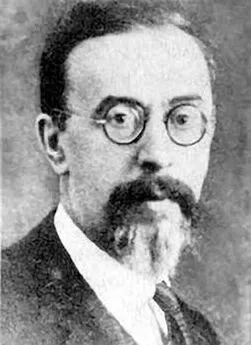Эллиот Аронсон - Общественное животное. Введение в социальную психологию
- Название:Общественное животное. Введение в социальную психологию
- Автор:
- Жанр:
- Издательство:неизвестно
- Год:неизвестен
- ISBN:нет данных
- Рейтинг:
- Избранное:Добавить в избранное
-
Отзывы:
-
Ваша оценка:
Эллиот Аронсон - Общественное животное. Введение в социальную психологию краткое содержание
Общественное животное. Введение в социальную психологию - читать онлайн бесплатно полную версию (весь текст целиком)
Интервал:
Закладка:
27. Aronson, E., amp; Golden, B. (1962). The effect of relevant and irrelevant aspects of communicator credibility on opinion change. Journal of Personality, 30, 135-146.
28. Walster(Hatfield), E., Aronson, E., amp; Abrahams, D. (1966). On increasing the persuasiveness of a low prestige communicator. Journal of Experimental Social Psychology, 2,325-342.
29. Eagly, A., Wood, W., amp; Chaiken, S. (1978). Causal inferences about communicators and their effect on opinion change. Journal of Personality and Social Psychology, 36, 424-435.
30. Santa Cru^ Sentinel, January 13, 1987, p. A8.
31. Walster(Hatfield), E., amp; Festinger, L. (1962). The effectiveness of ‹overheard› persuasive communications. Journal of Abnormal and Social Psychology, 65, 395-402.
32. Mills, J., amp; Aronson, E. (1965). Opinion change as a function of communicator's attractiveness and desire to influence. Journal of Personality and Social Psychology, 1,173-177.
33. Eagly, A., amp; Chaiken, S. (1975). An attribution analysis of the effect of communicator characteristics on opinion change: The case of communicator attractiveness. Journal of Personality and Social Psychology, 32, 136-144.
34. Hartmann, G. (1936). A field experience on the comparative effectiveness of ‹emotional› and ‹rational› political leaflets in determining election results. Journal of Abnormal and Social Psychology, 31, 336-352.
35. Leventhal, Н. (1970). Findings and theory in the study of fear communications. In L. Berkowitz (Ed.), Advances in experimental social psychology (Vol. 5, pp. 119- 186). New York: Academic Press.
36. Leventhal, Н., Meyer, D., amp; Neren^, D. (1980). The common sense representation of illness danger. In S. Rachman (Ed.), Contributions to medical psychology (Vol. 2). New York: Pergamon Press.
37. Time, February 16, 1987, pp. 50-53.
38. San Francisco Chronicle, June 19, 1987, p. 9.
39. Leishman, К. (1987, February). Heterosexuals and AIDS. The Atlantic Monthly, pp. 39-58.
40. Liberman, A., amp; Chaiken, S. (1992). Defensive processing of personally relevant health messages. Personality and Social Psychology, 18, 669-679.
41. dark III, R.D. (1990). The impact of AIDS on gender differences in willingness to engage in casual sex. Journal of Applied Social Psychology, 20, 771-782.
42. Leishman, К. (1987, February). The Atlantic Monthly. Heterosexuals and AIDS, p. 44.
43. Williams, S.S., Kimble, D.L., Cowell, N.H., Weiss, L.H., Newton, K.J., Fisher, J.D., amp; Fisher, W.A. (1992). College students use implicit personality theory instead of safe sex. Journal of Applied Social Psychology, 22, 921-933.
44. Hirschom, M. (1987, April 29). AIDS not seen as a major threat by heterosexuals on campuses. Chronicle of Higher Education.
45. Aronson, E. (1989). Excuses, excuses, excuses: Why sexually active college students do not use condoms. Invited address, meeting of the Western Psychological Association, 1989.
46. Aronson, E. (1991). How to persuade sexually active college students to use condoms. Invited address, meeting of the American Psychological Association, San Francisco, California.
47. Nisbett, R., Borgida, E, Crandall, R., amp; Reed, Н. (1976). Popular introduction: Information is not always informative. In J.S. Carroll and J.W. Payne (Eds.), Cognition and social behavior^. 227-236). Hilisdale, NJ: Eribaum. Nisbett, R., amp; Ross, L. (1980). Human inference: Strategies and shortcomings of social judgement. Englewood Cliffs, NJ: Prentice-Hall. Hamill, R., DeCamp Wllson, Т., amp; Nisbett, R. (1980). Insensiv-ity to sample bias: Generalizing from atypical cases. Journal of Personality and Social Psychology, 39, 578-589. Шелли Тейлор, социальный психолог-когнитивист, утверждает, что эффект ‹яркости› не подтверждается большинством экспериментальных результатов. Обсуждение этой темы - см.: Taylor, S., amp; Thompson, S. (1982). Stalking the elusive ‹vividness› effect. Psychological Review, 89, 155-181.
48. Gonzales, M.H., Aronson, E., amp; Costanzo, M. (1988). Increasing the effectiveness of energy auditors: A field experiment. Journal of Applied Social Psychology, 18, 1049- 1066.
49. Hovland, С., Lumsdain, A., amp; Sheffield, F. (1949). Experiments on mass communications. Princeton: Princeton University Press.
50. Miller, N., amp; Campbell, D. (1959). Recency and primacy in persuasion as a function of the timing of speeches and measurements. Journal of Abnormal and Social Psychology, 59,1-9.
51. Zimbardo, P. (1960). Involvement and communication discrepancy as determinants of opinion conformity. Journal of Abnormal and Social Psychology, 60, 86-94.
52. Whittaker, J.O. (1963). Opinion change as a function of communication-attitude discrepancy. Psychological Reports, 13, 763-772.
53. Hovland, С., Harvey, O.J., amp; Sherif, M. (1957). Assimilation and contrast effects in reaction to communication and attitude change. Journal of Abnormal and Social Psychology, 55,244-252.
54. Aronson, E., Turner, J., amp; Carlsmith, J.M. (1963). Communication credibility and communication discrepancy as determinants of opinion change. Journal of Abnormal and Social Psychology, 67,31-36.
55. Zellner, M. (1970). Self-esteem, reception, and influenceability. Journal of Personality and Social Psychology, 15, 87-93.
56. Janis, I.J., Kaye, D., amp; Kirschner, P. (1965). Facilitating effects of ‹eating-while-reading› on responsiveness to persuasive communication. Journal of Personality and Social Psychology, 1, 181-186.
57. Hass, R.G., amp; Grady, K. (1975). Temporal delay, type of forewarning, and resistance to influence. Journal of Experimental Social Psychology, II, 459-469.
58. Freedman, J., amp; Sears, D. (1965). Warning, distraction, and resistance to influence. Journal of Personality and Social Psychology, 7, 262-266.
59. Brehm, J. (1966). A Theory of Psychological Reactance. New York: Academic Press.
60. Bensley, L.S., amp; Wu, R. (1991). The role ofpsychological reactance in drinking following alcohol prevention messages. Journal of Applied Social Psychology, 21, 1111-1124.
61. Heilman, M. (1976). Oppositional behavior as a function of influence attempt intensity and retaliation threat. Journal of Personality and Social Psychology, 33, 574- 578.
62. Petty, R., amp; Cacioppo, J. (1977). Forewarning, cognitive responding, and resistance to persuasion. Journal of Personality and Social Psychology, 35, 645-655.
63. Festinger, L., amp; Maccoby, N. (1964). On resistance to persuasive communications. Journal of Abnormal and Social Psychology, 68, 359-366.
64. Sloan, L., Love,R., amp; Ostrom, T. (1974). Political heckling: Who really loses? Journal of Personality and Social Psychology, 30, 518-525.
65. McGuire, W., amp; Papageorgis, D. (1961). The relative efficacy ofvarious types of prior belief-defense in producing immunity against persuasion. Journal of Abnormal and Social Psychology, 62, 327-337.
66. McAlister, A., Perry, С., Killen, J., Slinkard, L.A., amp; Maccoby, N. (1980). Pilot study of smoking, alcohol and drug abuse prevention. American Journal of Public Health, 70,719-721.
67. Pryor, В., amp; Steinfatt, W. (1978). The effects of initial belief level on inoculation theory and its proposed mechanisms. Human Communications Research, 4, 217-230.
68. Canon, L. (1964). Self-confidence and selective exposure to information. In L. Festinger (Ed.), Conflict, desision, and dissonance (pp. 83-96). Stanford, CA: Stanford University Press.
69. TV violence for a new generation (1987). TV Monitor (p. 2). San Francisco: The Children's Television Resource and Education Center.
70. Статистика взята из: Pratkanis, A.R., amp; Aronson, E. (1992). Age of propaganda: The everyday use and abuse of persuasion. New York: W.H. Freeman.
71. Liebert, R. (1975, July 16). Testimony before the Subcommittee on Communications of the House Committee on Interstate and Foreign Commerce.
72. San Francisco Chronicle, August 25, 1979, p. 15. San Francisco Sunday Examiner and Chronicle, August 26, 1979, p. 2. San Jose Mercury-News, February II, 1982, p. A2.
73. Gerbner, G., Gross, L., Morgan, M., amp; Signorelli, N. (1986). Living with television: The dynamics of the cultivation process. In J. Bryant amp; D. Zillman (Eds.), Perspectives on media effects (pp. 17-40). Hilisdale, NJ: Eribaum.
74. Цит. по: Newsweek, December 6, 1982, p. 140.
75. Haney, С., amp; Manwlati, /.(1981). Television criminology: Network illusions of criminal justice realities. In Readings about the social animal (6th ed., pp. 120-131). San Francisco: W.H. Freeman.
76. Hennigan, K., Heath, L., Wharton, J.D., DelRosario, M., Cook, Т., amp; Colder, B. (1982). Impact of the introduction of television on crime in the United States: Empirical findings and theoretical implications. Journal of Personality and Social Psychology, 42, 461-477.
77. Ronis,D.,Baumgardner, M., Leippe, M.,Cacioppo, J., amp; Greenwald, A. (1977). In search of reliable persuasion. Journal of Personality and Social Psychology, 35, 548-569.
1. Lippmann,W. (\911).Public opinion.New York: Harcourt, Brace, amp; Co.
2. Именно в те времена возник обычай, согласно которому мужчина должен был идти так, чтобы ‹прикрывать› женщину от проезжей части улицы. В эпоху средневековья подобный обычай казался вполне осмысленным: сапоги мужчины, если их забрызгает грязью, было легче отчистить, чем платье женщины.
3. Panati, С. (1987). Extraordinary origins of everyday things. New York: Harper amp; Row.
4. Gilovich, T. (1991). How we know what isn 't so. New York: Free Press.
5. Bentham, J. (1876/1948). A fragment on government and an introduction to the principles of morals and legislation.Oxford: Blackwell.Pyc.nep, - Избранные сочинения Иеремии Бентама. Т. 1. Спб., Русская книжная торговля. 1867, Современную версию ‹калькуляции блага› - см.: Fishbein, M., amp;.А^еп, J. (1975). Belief, attitude, intention, and behavior: An introduction to theory and research. Reading, MA: Addison-Wesley.
6. Kelley, H.H. (1967), Attribution theory in social psychology. In D. Levine (Ed.), Nebraska symposium on motivation (Vol. 15, pp. 192-241). Lincoln: University of Nebraska Press. Kelley, H.H. (1973). The process of causal attribution. American Psychologist, 28, 107-128.
7. Высказывается интересная мысль о том, что даже ученые не всегда мыслят как ученые, подпадая под действие тех предрассудков, которые описаны в данной главе. CM. Greenwald, A. G., Pratkanis, A. R., Leippe, M.R., amp; Baumgardner, M.H. (1986). Under what conditions does theory obstruct research process? Psychological Review, 93, 216-229.
8. Fiske, S. Т., amp; Taylor, S.E. (1991). Social cognition. New York: McGraw-Hill.
9. Bronowski, J. (1973). The ascent of man. Boston: Little, Brown, Co. Pratkanis, A.R., amp; Aronson, E. (1991). The age of propaganda: The everyday use and abuse of persuasion. New York: W.H. Freeman.
10. Pratkanis, A.R., Farquhar, P.H., Silbert, S., amp; Hearst, J. (1989). Decoys produce contrast effects and alter choice probabilities. University of California, Santa Cruz.
Читать дальшеИнтервал:
Закладка:







